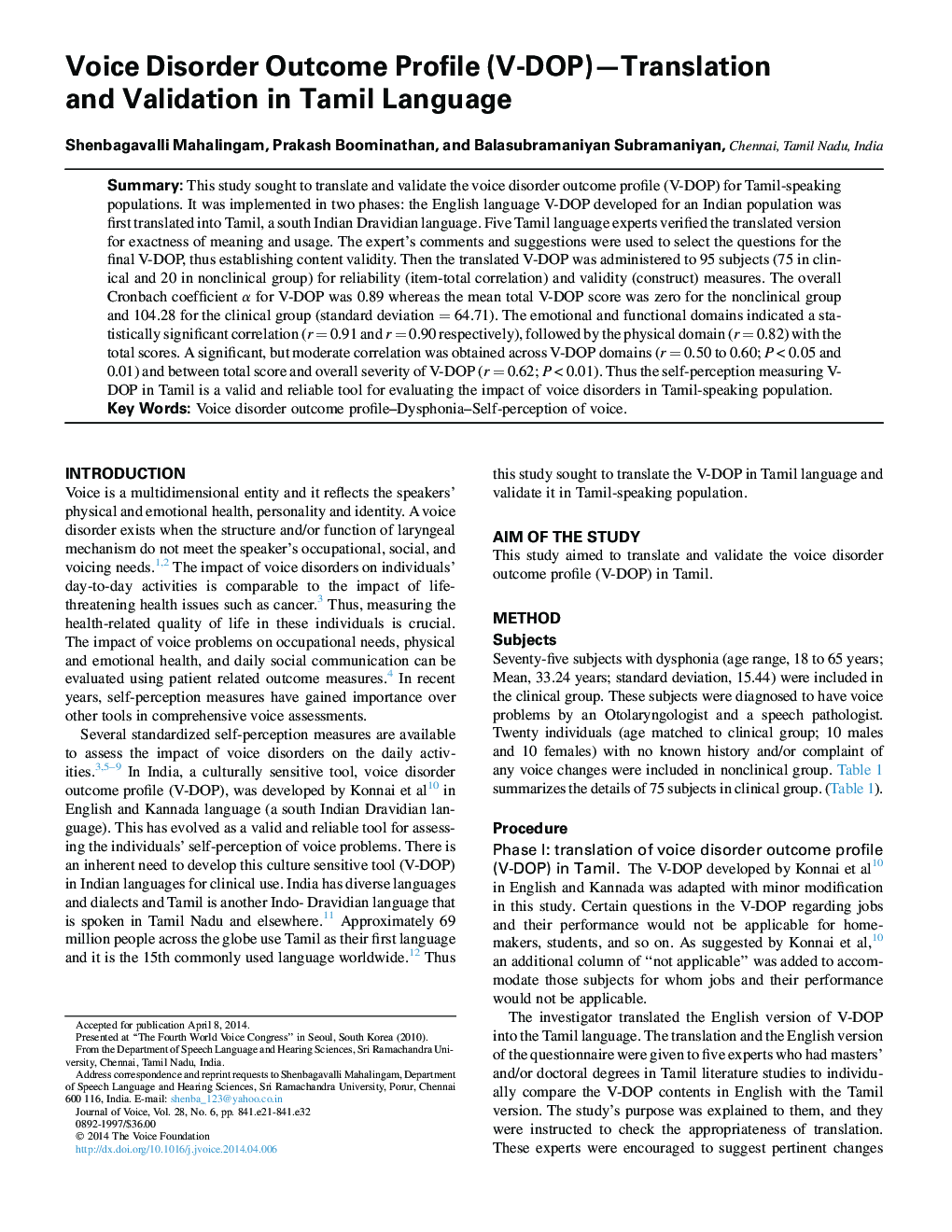| Article ID | Journal | Published Year | Pages | File Type |
|---|---|---|---|---|
| 1101630 | Journal of Voice | 2014 | 12 Pages |
Abstract
This study sought to translate and validate the voice disorder outcome profile (V-DOP) for Tamil-speaking populations. It was implemented in two phases: the English language V-DOP developed for an Indian population was first translated into Tamil, a south Indian Dravidian language. Five Tamil language experts verified the translated version for exactness of meaning and usage. The expert's comments and suggestions were used to select the questions for the final V-DOP, thus establishing content validity. Then the translated V-DOP was administered to 95 subjects (75 in clinical and 20 in nonclinical group) for reliability (item-total correlation) and validity (construct) measures. The overall Cronbach coefficient α for V-DOP was 0.89 whereas the mean total V-DOP score was zero for the nonclinical group and 104.28 for the clinical group (standard deviation = 64.71). The emotional and functional domains indicated a statistically significant correlation (r = 0.91 and r = 0.90 respectively), followed by the physical domain (r = 0.82) with the total scores. A significant, but moderate correlation was obtained across V-DOP domains (r = 0.50 to 0.60; P < 0.05 and 0.01) and between total score and overall severity of V-DOP (r = 0.62; P < 0.01). Thus the self-perception measuring V-DOP in Tamil is a valid and reliable tool for evaluating the impact of voice disorders in Tamil-speaking population.
Keywords
Related Topics
Health Sciences
Medicine and Dentistry
Otorhinolaryngology and Facial Plastic Surgery
Authors
Shenbagavalli Mahalingam, Prakash Boominathan, Balasubramaniyan Subramaniyan,
